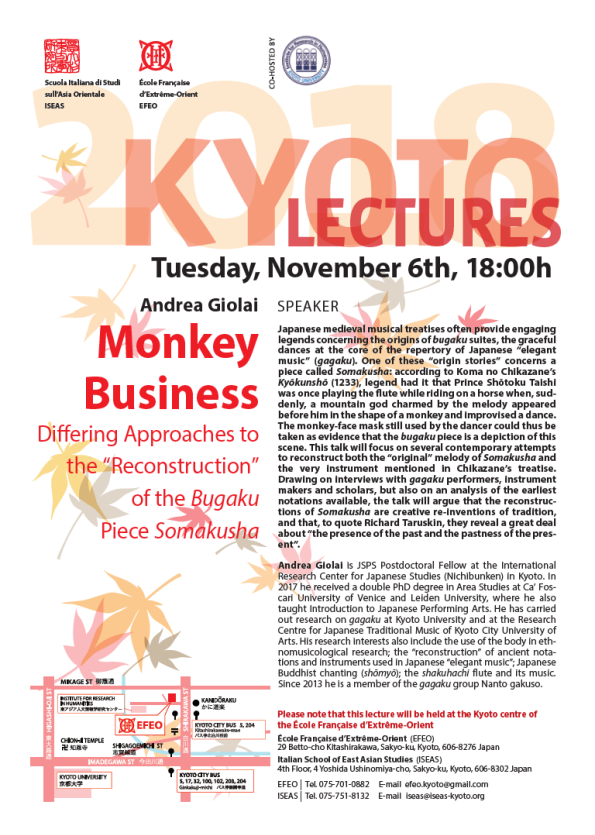Japanese medieval musical treatises often provide engaging legends concerning the origins of bugaku suites, the graceful dances at the core of the repertory of Japanese “elegant music” (gagaku). One of these “origin stories” concerns a piece called Somakusha: according to Koma no Chikazane’s Kyokunsho (1233), legend had it that Prince Shotoku Taishi was once playing the ute while riding on a horse when, suddenly, a mountain god charmed by the melody appeared before him in the shape of a monkey and improvised a dance. The monkey-face mask still used by the dancer could thus be taken as evidence that the bugaku piece is a depiction of this scene. This talk will focus on several contemporary attempts to reconstruct both the “original” melody of Somakusha and the very instrument mentioned in Chikazane’s treatise. Drawing on interviews with gagaku performers, instrument makers and scholars, but also on an analysis of the earliest notations available, the talk will argue that the reconstructions of Somakusha are creative re-inventions of tradition, and that, to quote Richard Taruskin, they reveal a great deal about “the presence of the past and the pastness of the present.
Please refer to the attached document.
Tuesday, November 6th, 18:00h
Please note that this lecture will be held at the Kyoto centre of the École Française d’Extrême-Orient.

